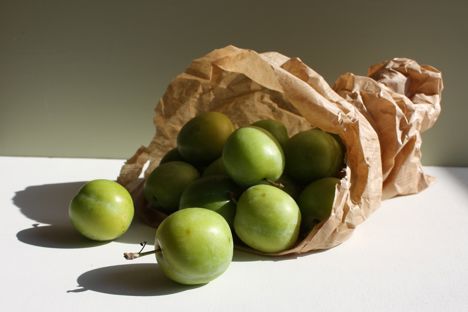'Greengage' is a beautiful name - but for these little plums, it's one of many. In France, they're known as 'Reine-Claude', and in Turkey, they're somewhat less romantically named 'Erik'.
The sweet dessert plums were first imported to Britain in 1724, but are now firmly embedded in our national cuisine. They start to ripen round late August and September. It's round this time that the skin is at its thinnest and luminescent, just concealing the juicy flesh below.
An under ripe greengage has the same tartness as rhubarb or gooseberry. But a perfectly ripe greengage is sweet and succulent. They are delicious eaten raw, and are often also cooked in desserts or savoury condiments. Greengages are widely-available at greengrocers and supermarkets when in season. To prolong enjoyment, greengages can be preserved in alcohol, turned into a jam, or poached and then frozen.
How to cook greengages
Greengages can be cooked in an oven - inside a crumble or pie, for example. Or they can be cooked on a hob with a bit of water, to make a lose compote. Either way, they remain textured - with detectable skin and flesh. To create a smoother-textured purée, blend the cooked greengages and pass them through a sieve, or a mouli. The purée can then be used in cocktails, jellies or sorbets.
Greengages have high pectin levels, which make them a good fruit for preserving. They make sweet and delicious jams, but also work well in a savoury context. A spoon of greengage chutney cuts through fatty meats, or oily fish like mackerel. A good accompaniment to sashimi or soused fish.
What greengages go with
Greengages work well against a sweet backdrop - like a buttery pastry case, a sweet crumble topping, or a rich, custard-based ice cream. Delicate spicing is a nice way to add interest to a greengage dessert - try nutmeg, vanilla, star anise or cinnamon. Ginger or sweet nuts like pecans or almonds also work well alongside greengages, with a greengage frangipane making a lovely autumnal dish.
If the greengages have been cooked with vinegar, onions and savoury spices to make a sharp chutney, then the flavours are good with oily fish like mackerel, or rich cheeses like bries or camemberts.
Get in touch
Please sign in or register to send a comment to Great British Chefs.



